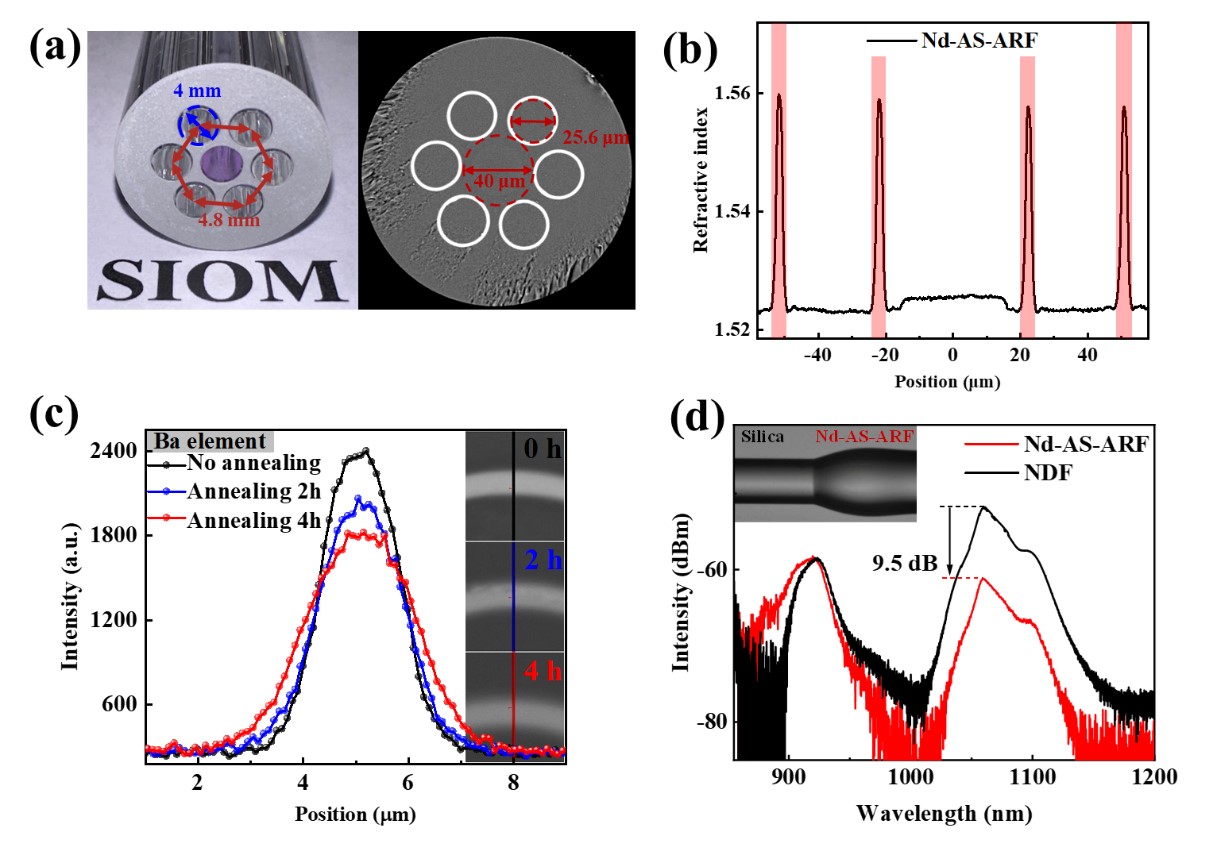
Researchers Make Progress on the Nd-doped All-solid-state Anti-resonant Fibers
A research team from Shanghai Institute of Optics and Fine Mechanics (SIOM), Chinese Academy of Sciences (CAS), has recently reported their progress on the design, fabrication and thermal annealing of Nd-doped all-solid anti-resonant silicate fibers (Nd-AS-ARF) for 0.9 μm. The results would be published in Optics and Laser Technology in April, 2025.
Currently, the 0.9 μm fiber laser can be directly used for pumping Yb3+-doped laser materials, atmospheric sounding and biological two-photon imaging. Its frequency-doubling can produce deep blue laser light, which is of great significance in underwater communication, atomic cooling, laser storage and laser processing. However, the main emission of Nd3+-doped fibers is usually located at 1.06 μm, which leads to the low efficiency of 0.9 μm lasers and the high susceptibility to the generation of 1.06 μm spontaneous radiation, limiting their output power and applications.
In their research, the team innovatively proposed an all-solid-state anti-resonant fiber structure, which combines the advantages of large-mode-field single-mode transmission and filtering characteristics. Through the rod-in-tube technique combined with high-temperature drawing, the Nd-AS-ARF was successfully fabricated with a background loss of 0.3 dB/m at 1200 nm. The results of electron probe microanalysis (EPMA) test indicate a significantly diffusion of the Ba element accompanying the fiber drawing process. Additional thermal annealing could further enhance element diffusion, enabling the active regulation of the resonant band towards longer wavelengths. In the 30 cm-long Nd-AS-ARF, the loss at 1.06 μm is 10.5 dB higher than at 0.92 μm, favoring the Nd three-level laser.
This work provides a new idea for the development and application of 0.9 μm high-power fiber lasers, and the novel fiber structure scheme is expected to find wider applications in fiber lasers and amplifiers for Yb, Er, Tm and other rare earth elements.
This work was supported by the Strategic Priority Research Program of the Chinese Academy of Science. 
Fig.1 (a) Cross-section of the preform rod and the Nd-AS-ARF; (b) radial distribution of the refractive index of the Nd-AS-ARF; (c) radial line-scan analysis of EPMA for the Ba element of the high refractive index capillaries; (d) comparison of ASE spectra of the Nd-AS-ARF and double-clad Nd-doped firer
Article website: https://doi.org/10.1016/j.optlastec.2024.112118
Contact:
CHENG Yue
Advanced Laser and Optoelectronic Functional Materials Department,
Shanghai Institute of Optics and Fine Mechanics, CAS
Email: chengyue@siom.ac.cn